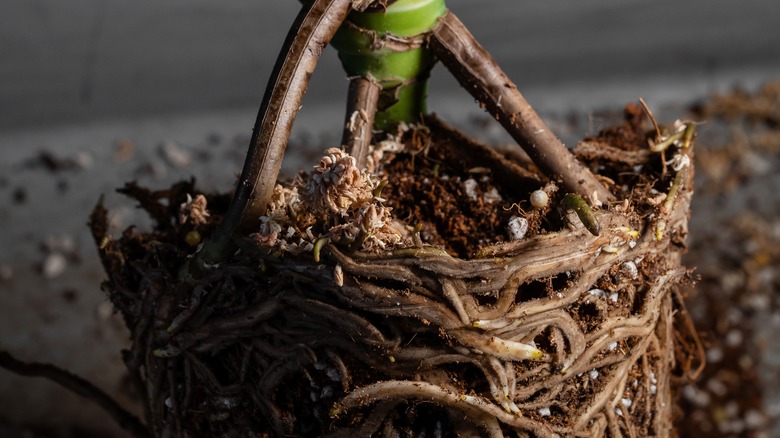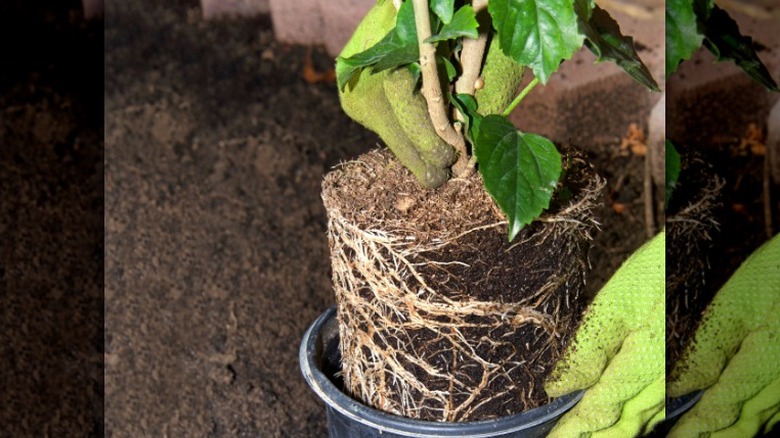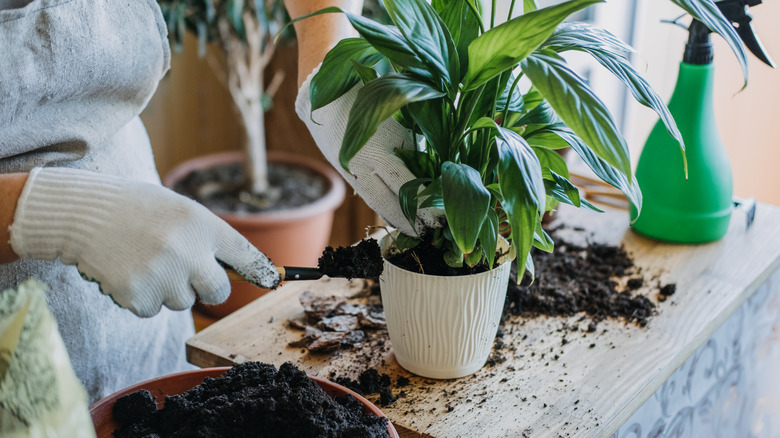How To Revive A Root-Bound Houseplant
Taking care of houseplants can pose some challenges, root-binding being one of them. A root-bound plant happens when it has outgrown its pot and begins winding and entangling its roots, cutting itself off from attaining adequate and essential nutrients. It can often lead to a plant's dehydration as well since most of the container is blocked off by tightly wound roots. When assessing whether or not your plant is rootbound, the easiest way to tell will be to pull it from its pot. Still, there are other ways to gather that your plant is suffering from bound roots, such as yellowing and withering leaves at the base, stunted growth, a cracking pot from the root's pressure, and roots protruding out the top or snaking out the drainage holes.
It's pretty common to bring a plant home from a nursery or garden center and find that it is rootbound, but fortunately, you can help your root-bound houseplants by transferring them into larger receptacles and loosening up their roots. The process may take some time and consist of some pruning, but with a gentle hand and concentration, your plant will be growing freely in no time.
Mending root-bound plants
The first step in fixing a root-bound houseplant will be locating a new pot. A good rule of thumb is that the pot should be at least a couple of inches wider than the plant's diameter, but 4 inches will be a safe bet that your plant has plenty of room to grow. It would also help to prepare a new soil mix as you'll not only lose soil as the roots are dispersed, but it's wise to avoid reusing soil that is likely depleted of nutrients. As you remove the plant from its crowded container, gently grip the base and wiggle the pot off. Once the plant is free, soak it in water for three to five minutes to help loosen up compacted and tightly tangled roots and rehydrate them.
After soaking, the roots will be flexible enough for you to detangle them, but sometimes, it won't be enough. For extremely bound plants, you may need to cut into the sides of the root ball and snip away roots to free up others. It may seem like you're hurting the plant, but it'll promote new and healthier growth. Once the roots have been released, continue repotting as usual. Remember that not all plants die or suffer from root-binding; certain types, like snake plants, peace lilies, spider plants, and aloe vera, prefer root-bound conditions. So, always do your research to ensure this is a process that will help and not hinder a plant's growth.
How to prevent the issue
Understanding how to prevent root-binding from reoccurring or happening to your houseplants in the first place is crucial to their health. Even after helping a plant unwind its roots, the root system can be damaged and still struggle to maintain nutrients and new growth, so avoiding it altogether should be the goal. First and foremost, reducing the chances of root-binding will lie in selecting correctly sized pots, monitoring root growth, and being proactive about repotting the plant when necessary. As you shop for new additions to your indoor garden at stores and nurseries, always examine whether the plant is rootbound and consider finding ones that already have healthy root systems in place.
The type of pot you decide to use can impact root growth as well, and it's not only about the size. Air pots have been increasingly popular for avoiding root-bound situations and work with a method called air-pruning, which exposes roots to more oxygen. More air reaching a plant's roots keeps them from breaching the sides of the pot and instead maintains a centered and downward growth, such as a branch root system. Branch root systems are ideal for helping absorb water and nutrients to the fullest and will result in a healthy, unbound houseplant.


